#counter reformation
Text
Another of the Reformation Era Catacomb Saints

Many might assume this is a recently excavated find from an Aztec temple. In reality it is an exhumed corpse from a 3rd century Roman grave dug up, jeweled, and sent to a church in late 1500's Germany. This area had been deeply affected by the struggles between reformation and catholic groups. The churches also showed the signs, where iconoclasm had destroyed the art and relics that gave locals a sense of pride and safety.
2 notes
·
View notes
Text
‘Mary I: Queen of Sorrows’ by Alison Weir
Thanks to Headline Review for sending me a copy of this to review.
I really enjoyed this one, better than the previous one in the series on Henry VIII. Mary’s story is less well-known which is perhaps why I enjoyed it more. Henry’s story has been raked over so many times now and trying to fit his whole life and all of the intricacies of the changing foreign, domestic, and religious policy into a…

View On WordPress
#Alison Weir#Bloody Mary#Book#Catholic#Catholicism#Counter Reformation#Fiction#Historical#Historical Fiction#History#Mary I#Mary Tudor#Novel#Princess Mary#Queen#Queen of Sorrows#Queenship#Reformation#Religion#Review#Roman Catholicism#Tudor#Tudors
0 notes
Text
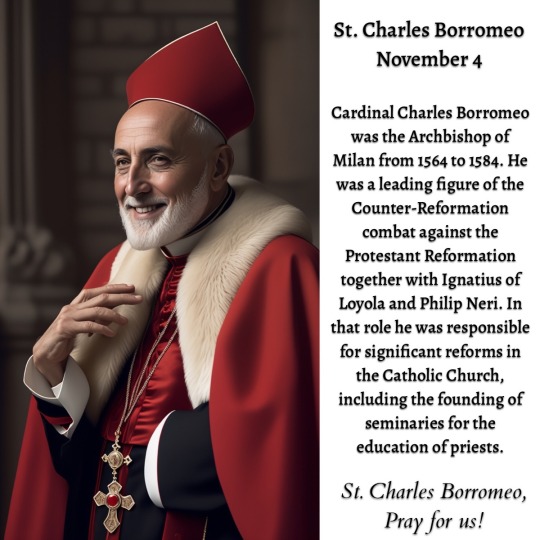
0 notes
Text
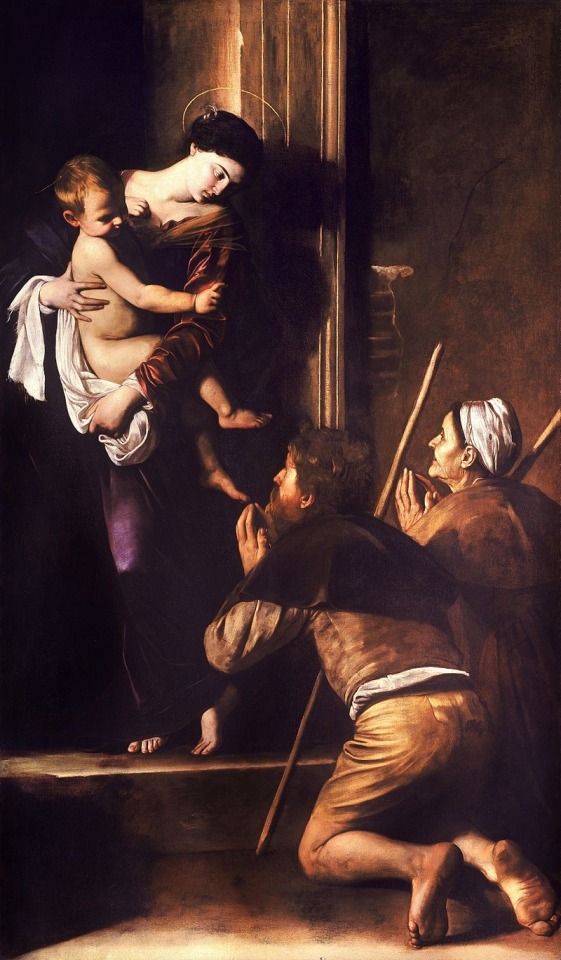
Madonna di Loreto by Caravaggio (ca. 1604-06)
youtube
#caravaggio#madonna#Madonna di Loreto#Jesus#baroque#Youtube#art history#art#fine arts#painting#counter reformation#catholiscism#catholic#christianity#religion#loreto#christ
0 notes
Text
#catholicism#catholic faith#catholic#prayer#christianity#church reform#reform#counter reformation#Catholic reformation#communion of saints#saints#holiness#virtue#growth in virtue
0 notes
Text
Book Review: ‘Heroes and Heretics: How Renaissance Artists and Reformation Priests Created Our World’

Heretics and Heroes: How Renaissance Artists and Reformation Priests Created Our World by Thomas Cahill
My rating: 3 of 5 stars
History is never quite the sum of its parts, as it is the summation of the parts that matter to those whose interests have endured. For the renaissance period of what now constitutes Europe, much effort is required to adequately document the combinations and conflicts that gave rise to new ideas, perceptions, arguments, and cultural idiosyncrasies. Cahill's HERETICS AND HERESY is modestly organized and selectively detailed. No single tome can articulate the multitude of splintering experiences of Europe's renaissance period, whether in Italy, Germany, Spain, or the northerly regions, and yet the author makes an earnest attempt.
The book's incompleteness does not become readily apparent for some time, however obvious it may seem from a distance. The author provides considerable depth and context when discussing the chronology and evolution of artistic genius among painters and sculptors in Italy, how they were intertwined with regional political factions, and how their skill earned the favor of, and later fell out of favor with, religious zealots of the time. And yet, the author can only dedicate so many words and so many color plates to the cleverness of peculiar men of status.
Cahill's approach to art history and the environments that birthed many a movement or individual are an informative but patchwork ordeal. Sometimes by necessity and other times due to the overwhelming influence of a particular individual, Cahill's narrative devotes much of its energy toward understanding the writers, sculptors, painters, and rhetoricians who were their era's most dominant personalities. Helpful for readers eager to know that Michelangelo was a slovenly fellow. Not so helpful for an actual diagnosis of the social, cultural, and political impacts of Michelangelo's work. Helpful for those eager to know of the reasoning behind Luther's supposed "pathologically induced constipation." Not so helpful for those interested in the less predictable, less gendered, less religious exploits that branched off Luther's efforts in surprising ways. One might argue the author spends too much time discussing and fawning over the art (or the artists) rather than communicating in full the shifting political schema behind each piece of art (or each artist).
HERETICS AND HERESY provides exquisite detail in areas such as the counter-reformation, the relationship between an indulgent royalty and the influence of the Catholic church, and other presumptions of authority that emanated from those whose power was in constant flux. These snapshot versions of European history are helpful but are also necessarily incomplete. Nearly all of the figures profiled are male. And so few of those profiled fall beyond the realm of standard presumptions of the formal Italian Renaissance. The splintering of Protestantism and the birth of Anglicanism, for example, is an area where so much information is glossed, one surmises it may well never have been mentioned at all.
The book houses a great deal and leaves out just as much. The author's endnotes acknowledge the gaps in research yet do not read at all as being invested in more sharply tuning the research that exists. Sometimes, HERETICS AND HERESY feels needlessly indulgent; Cahill's sincere interest grows superfluous, often deferring to a first-person account (of familiarity) of a religious or cultural figure. However, for readers interested in a literary account of what is essentially a second-year post-secondary course on the renaissance, in capsule form, this book isn't a bad place to start.
Nonfiction Book Reviews || ahb writes on Good Reads
#review#nonfiction#heretics and heroes#thomas cahill#renaissance artists#renaissance italy#renaissance france#regional political factions#3 of 5 stars#goodreads#michelangelo#cultural idiosyncrasies#counter reformation#depth and context#needlessly indulgent#pathologically induced constipation#what now constitutes Europe
0 notes
Note
do u have a specific year in mind or is it just general 16th century vibes
Very late 16th century. I'm reluctant to assign them specific years because I prefer to have just a little bit of wiggle room, I'd go crazy if I had to map out their timeline to follow real life historical details to a T (it's not impossible to do that by any means, I'm just not strong enough weh). For example, I tend to use a lot of early to mid 1500's references for Vasco's wardrobe, by the end of the century fashion had already started to take somewhat darker and more rigid direction and I like to keep Vasco's attires colorful, voluminous and eyecatching. Mostly to highlight their visual contrast to Machete's angular and constricted silhouettes and predominantly black palette.
I keep calling them late Renaissance dogs but in truth they're closer to early Baroque. At the moment I'd say they were probably born in the 1570's, Vasco is a couple years older than Machete but in the grand picture they're practically the same age. In the bad ending Machete dies in his early/mid 40's, that would mean a little after the turn of the century. Vasco lives to his 70's so he'd still be around in... 1640, right? But again, I don't like giving them fixed dates, I'm just thinking out loud. Might go back and retcon this in the future if I change my mind in a way or another.
222 notes
·
View notes
Text
Counter reformation priest Evan and heretic, perverse Barty AU
Barty is a nepo baby Italian with family connections to the Blacks (imagine sforza-esque power) on trial for sodomy (he was at a hippy-art orgy, he poses for cheap scum painters). So the church brings in their most "humane" priest to investigate and question him. Father Rosier.
And Evan is this village freak, born a twin with blank eyes and lopsided shoulders, who snuck into the forrest with Pandora and came back splattered in blood. And he is unnervingly pious, he gives every stray who comes to his monastery medical treatment and he does so with a blank face. He always volunteers to handle the dead bodies.
And Barty is tied up in some catholic rural church and Evan walks in, fully decked out in the decadence of counter reformation catholic uniforms. White billowing robes that fall over his hands because he's undernourished and frail. And Evan has deep set eye bags, slanted hips, a malnourished heart shape face with creamy skin and bright pink lips and Barty he loses it. He's flirting and giggling, he's biting his lip and making ridiculously suggestive faces (imagine carravagio's early paintings) He's slipping his linen shirt off his shoulders. And Evan is just so unmoved by the whole scene outwardly.
The torture method that Evan is ecstatic to try is sticking a wooden pole up someone's .... So Evan sets it up, all rigid and un-emotive. Barty sucks on it and looks up at Evan with the biggest, most pitiful sex eyes, this obviously leads to perverted, power imbalanced sex.
Cut to Barty being a free innocent man and living with Evan in his hometown of rural France in some undeveloped catholic parish where all the locals see Evan, the deformed, amoral, religious twin and a deranged, perverted Italian frolicking around and dissecting animals.
And the live happily ever after the end :)
this is a copy paste of my deranged rambling to Lune, thank you for listening to me bb <3 @sommerregenjuniluft
#counter reformation AU my beloved#im salivating for frail brittle Evan walking around with a god complex#and Barty lapping up his twisted back and ego problems#evan rosier#barty crouch junior#bcj#mauraders#rosekiller#regulus black#I love them so much they have plagued me#hedonists and heretics
63 notes
·
View notes
Text

Wallace Polsom, Reformation and Counter-Reformation (2023), paper collage, 22 x 23.3 cm.
#wallace polsom#paper collage#collage#collage art#art#artists on tumblr#analog collage#contemporary art#handmade collage#handcut collage#21st century#wallacepolsom2023#surreal#surrealism#surreal art#art history#reformation and counter-reformation#humour#humor#advocaat
233 notes
·
View notes
Text
The Tudors ran so Wulf Hall could shuffle awkwardly around reiterating the same tired old Tudor stereotypes while claiming to be something new.
#It's so funny but as a historian I will genuinely defend 'The Tudors' to the death even with all its problems#Because it did was so few other Tudor shows/movies/media have ever done#And that is: it focused on things BEYOND just Henry and his wives.#Yes Henry was the focal point which makes SENSE but that's just it:#HENRY was the focal point. Most other Tudor media pieces have one of the wives (usually Catherine/Anne) as the focus and doesn't delve muc#Into the history or what was happening in England beyond the King's Great Matter.#The Tudors went ALL out. Yes they didn't get everything right but the fact that they tried and spotlighted so many other#Historical characters and events? The Pilgrimage of Grace? Actually LOOKING at the religious issues even if they weren't always accurate?#(Like with Aske for example. BUT AT LEAST THEY INCLUDED ROBERT ASKE like good lord it's like other Tudor media forgets everything else)#Focusing on Cromwell but also the Seymour brothers? The politics behind Henry? Even Brandon as annoying as his storylines could get.#Even smaller characters like Tallis and Gardiner and other Reformation and Counter-Reformation figures.#The fact that they featured the Reformation and Counter-Reformation AT ALL let alone tried to dive into the complexities of England's#religious crises. The burning of Anne Askew even? People having to navigate England's increasingly unstable religious situations?#The series hit its peak after the CoA/Anne stuff was over imho. Yes Cranmer and Norfolk annoyingly vanished despite being major figures in#the R/CR and they combined Mary and Margaret but god the Tudors did SO MUCH that NO OTHER PIECE OF TUDORS MEDIA has EVER DONE.#It looked BEYOND Henry BEYOND his wives and tried to paint a comprehensive pictur of a deeply troubling and divisive time in English histor#And it did so without demonising one side and it was just so good for so many reasons that I forgive its errors because damn did they TRY.#Tried in a way no one else ever has (no Wulf Hall did not I'm sorry)#(Wulf Hall was just the same old stereotypes rehashed and branded as something 'original' because it was from Cromwell's POV but again.#Same old stereotypes. Nothing actually original about anything else.)#The Tudors is so underrated for what it tried to do and what it achieved and I am reaching the tag limit but UGH god. Amazing.#Not even getting into how wonderful they were with Mary Tudor/Mary I herself and showing figures around her#Because that would be another tag essay considering the subject of my thesis.#Flawed but wonderful.#text#chey.txt
23 notes
·
View notes
Text

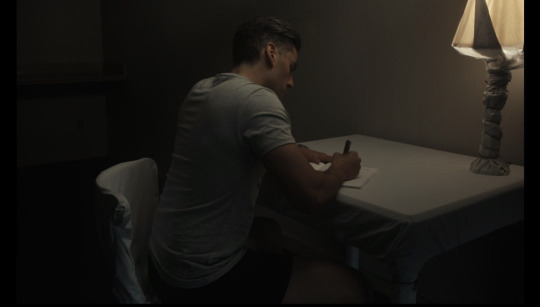
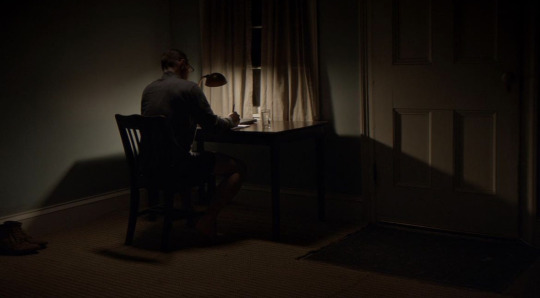
First Reformed (2017)
The Card Counter (2021)
Master Gardener (2023)
Directed by Paul Schrader
#dude loves Men In A Room Writing In Their Little Journal#first reformed#the card counter#master gardener
130 notes
·
View notes
Text
I’m sorry but the best Jon Snow AUs are those where he is some sort of civil servant. I always see people headcannon him as ROTC/soldier or cop but I think they kind of miss the mark. GRRM has steadily been moving away from the traditional warrior archetype with Jon and more into the counts-pebbles ruler type. So the cannon compliant AUs are the ones where he ends up as some sort of government official. Maybe he could be a city hall manager or an ombudsman. He could be a state representative or maybe even a senator. Let me remind people that he’s the only elected leader in the series. AU!Jon Snow would totally be the extremely competent but also extremely depressed congressional representative from like, idk, Alaska.
#jon snow#asoiaf#Not to discount Jon’s arc as a warrior#Maybe modern day Jon served in the army for a bit then turned to politics#Army makes more sense than him being a cop because he’s all about#Defending the realm’s freedom RAAAHHH 🦅🦅#Or that’s what he thought it would be like…#I could also see him being a progressive - not just a democrat#But he’d be the guy who’s always annoying and insistent#About the pressing need for extensive governmental reform#He’s extremely popular with his constituents but congress hates him lmaooo#He’d be the guy obsessing over govt corruption and reforming the country’s finances#You know a cool modern au idea for Jonathan?#FBI director - he does counter terrorism#OR MAYBE!!!#Secretary of State - cause of diplomacy stuff which he’s good at idk#He serves for a bit but is then ousted in a nasty coup after a particularly messy election#But he has a sort of cult like following with younger voters#So he stages a major comeback and becomes president ajsnaknaba#He signs a bunch of revolutionary but much needed executive orders#And is assassinated like two years into his term 😭#And goes down a polarizing figure - to some a martyr to others a nuisance#Someone write this down!
86 notes
·
View notes
Note
Would even the most liberal of liberal Catholics have opposed Henry VIII making himself head of the church? Conservative or liberal, seems kind of baseline for anybody of that era who thought of themselves as Catholics?
Yes, although it very much came down to a question of wording and framing. As I've noted, one could be a Catholic and also a Gallician or Conciliarist; plenty of perfectly pious Catholic monarchs had argued that their authority was equal to or superior to that of the Pope, at least when it came to matters of governance and law rather than matters of doctrine or theology.
#history#tudor england#tudor history#henry viii#catholicism#theology#the reformation#counter-reformation
9 notes
·
View notes
Photo
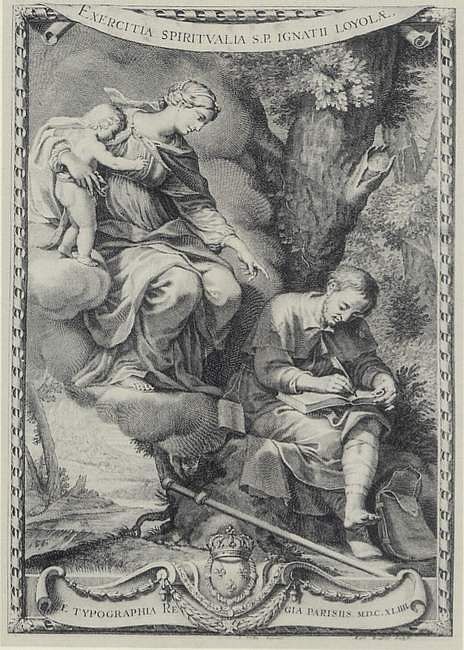
Loyola's Spiritual Exercises
The Spiritual Exercises of Ignatius Loyola (1548) is a manual of disciplines formulated by Ignatius Loyola (l. 1491-1556) to prepare one spiritually for Christian service. They were initially developed between 1522-1524 by Loyola for himself and then shared with others, specifically his friends who formed the Society of Jesus (Jesuits) in 1534. It was first published in 1548.
Continue reading...
25 notes
·
View notes
Text
pisses me off so much much that i’m not immune to people arguing about steven universe
#what is it about that g-dforsaken cartoon that makes my bones weep for blood#its like. the perfect combination of well intentioned progressive storytelling bungled themes antiblackness fandom culture and shipping bul#bullshit queer community physiology kids show and actually-good-except-all-the-bad-parts#anyways any defense of the show that starts with ‘lily orchard is full of shit huh’ immedialy into the trash you fucking go#not all criticism of the fucking thing stemmed from one annoying youtube skank. people have been hypercritical of SU since before that vide#was a glimmer in orchard’s eye - people have been making great and godawful points about it since steven fucking two#STEVEN TWO?!?#SEASON#like some points made against it ARE bullshit! but not all of them! and when real life seems to have spat out a few strawmen for yall to ar#argue against you’ll never make actual progress on the genuine fucking issues people have on it! its useless!#also it really irritates me that bc some people escalated criticisms of the diamonds to ‘su condones nazi redemption’ all responses to the#shows approach to justice just get countered with ‘but RS is jewish’.#like YEAH and actually her jewishness does inform the shows approach to justice abd punishment but that doesn’t make the end result GOOD#also judaism isn’t. spiritually speaking. 100% about reform and self-reflection rather than christian damnation barbarity or whatever#there is in fact harder edges to our shit its just unlikely steven universe would include WD getting hanged along with all her sons orchang#changing her mind at the last second because she hasn’t earned an uncomplicated admittance of fault and she sends and army after the#escaping stevenites only for said army to get drowned alive as the sea closes around them#lol#(or that it SHOULD have#imo while the diamonds did escape proper justice from just a tonal and like. thematic cohesion standpoint a violent execution of the#dictatorial class really would NOOOOT fit the show in any sense)
6 notes
·
View notes
Text
An entire art history class about st Sebastian without uttering the world homosexuality once. Kill yourself. It’s not just any eroticism the artist is being gay it’s relevant you asshole
#sam speaks#art history#sam’s tecaher have huge pitfalls and lack obvious layers of topics pt1884749201#the pushback against romanticized nudity in the catholic counter reform is queerphobic dont ignore it#also i hate that we talk about christian art that much. it’s what been the best conserved and what was imposed as the peak of creation#in european culturally christian societies#but it’s heavily commodified and restrictive part of artistic creation that doesn’t reflect all of its time. i want to see discussed#biases of the christiano capitalist in charge of validating artistic canons#where’s the reminder that alternative art was always a thing
4 notes
·
View notes